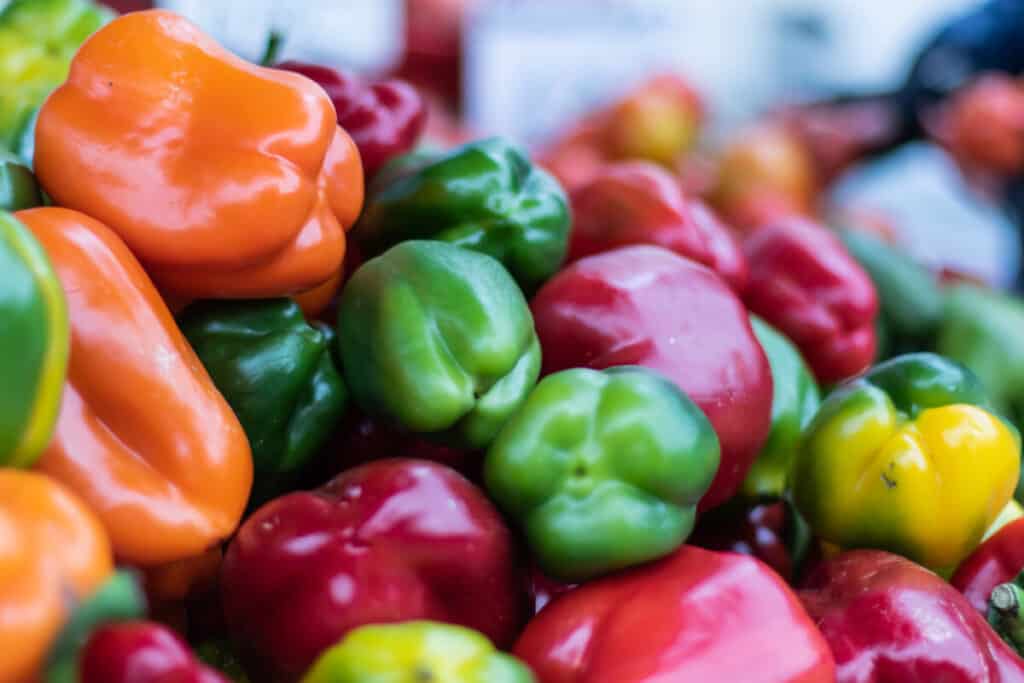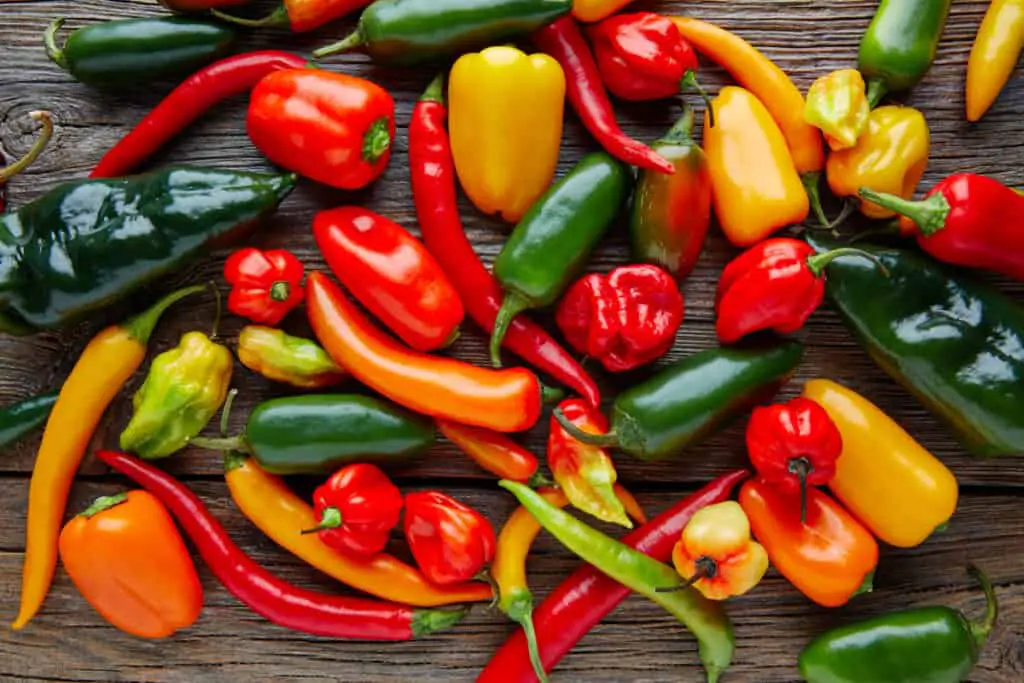This post contains affiliate links.
Bell peppers are so versatile, it’s no wonder that people want to buy them in bulk so that they always have them on hand. But, how do you store peppers so that they can last you more than just a week or two? For almost all vegetables, freezing without preparation is dangerous and could ruin the food.
Freezing bell peppers whole is a great resource for preparing to make stuffed peppers. In order to do so properly, first wash and dry the pepper, then cut off the top of the pepper, scoop out the seeds and membrane, and stick the top back on, before finally wrapping the pepper in plastic wrap.
Whether you’re planning on making stuffed peppers or any other recipe with bell peppers, freezing this vegetable could really save you time and hassle. But there’s certainly a right (and wrong) way to do this, so let’s make sure we do it the right way.
Prepare the Pepper(s) to Be Frozen
Due to the high volume of water in peppers, you want to take care when freezing them because they may crack. If you are planning to freeze an entire bell pepper, make sure to follow these steps:
- Wash the pepper and dry it completely with a paper towel (if there’s water on the outside, it increases the possibility of the bell pepper cracking).
- Cut the top of the pepper off and gut it (i.e., scrape out all of the seeds and membrane).
- Place the top back on.
- Wrap the pepper in plastic wrap and/or store it in a freezer-safe bag or container (make sure to press all the air out).
By doing so, you can extend the life of your peppers by up to 8–12 months (or even longer, but the flavor may not be the same), compared to a few days at room temperature or 1–2 weeks in the refrigerator.This makes it so that this versatile vegetable becomes even more useful, in that you can easily pull it out at any time during those eight months to make some stuffed peppers, fajitas, soup, and more.
Note: While wrapping the pepper in plastic wrap doesn’t seem to be the typical practice for other food items that go in the freezer, this is the recommended practice for whole bell peppers. Due to their size and tendency to have a lot of water, plastic wrap restricts the possibility for air to seep in that a plastic bag might. If you have just one whole pepper you’re freezing, you may want to plastic wrap the pepper and then stick it in a sandwich-sized plastic bag. But if you’re doing multiples, consider plastic wrapping each bell pepper before sticking them together in a bigger bag or container.

Blanching Isn’t Necessary for Bell Peppers
The majority of vegetables require a process called blanching in order to be frozen effectively. Blanching means scalding vegetables for a short amount of time in boiling water, and it traps all the nutrients, color, and taste in the vegetable before freezing it. You can certainly blanch your bell peppers if you want to, but due to the water in this vegetable, it’s certainly not necessary. And if you’re hoping to freeze whole bell peppers, it wouldn’t even work properly.
If you do decide to blanche your bell peppers, here’s how long you need to do so for both sliced peppers and halved peppers:
- Sliced peppers take 2 minutes
 to blanch.
to blanch.
- Halved peppers take 3 minutes
 to blanch.
to blanch.
While water blanching is the most recommended method, you could also try steam blanching, or microwave blanching. For water blanching, use a blancher if you have one, or a simple wire basket in a large pot will work just as well. Use a gallon of water for every pound of vegetables, and once the water is vigorously boiling, dunk the basket of vegetables inside before placing the lid on the basket. Don’t start counting the blanching time until the water returns to boiling.
Whole vs. Sliced or Diced
Of all the different ways there are to prepare bell peppers, it’s more common to see people freeze sliced or diced peppers. Due to their smaller size, they’re less likely to crack in the freezer, as a whole pepper might. In fact, if you store sliced peppers in the freezer, they could even serve as a cold snack to dip in some hummus or eat on their own.

The only difference in preparation between whole peppers and sliced or diced peppers is that you do something called “tray freezing,” where you place the slices or diced peppers on a tray (make sure they aren’t touching!) and freeze them for an hour or two. This helps the food not stick together when you combine them all in the same bag or container.
In fact, the only real benefit to freezing whole bell peppers is if you’ll be using them for stuffing. Otherwise, you’ll save space in the freezer and time (when you’ll have to cut the peppers later when they’re frozen) by just storing them as sliced or diced. And if you’re being indecisive about whether you’ll need sliced peppers or diced peppers (leading to another reason you might want to keep the peppers whole), you can just store a bag of each so that you’re extra prepared for either situation for any future meals.
Small Peppers

If you’re looking to freeze hot peppers like cayenne, jalapeños, habaneros, etc., luckily you won’t need to worry about cutting them up, since they’re so small and less likely to crack. All you have to do is wash them (in cold water, preferably), dry them, and then store them in an air-tight freezer bag or container. Just make sure when handling hot peppers that you don’t touch your eyes or face—either put your hands in plastic bags, or thoroughly wash your hands with soap if you forego the bags. Even so, avoid touching your eyes and face for a few minutes afterwards.

